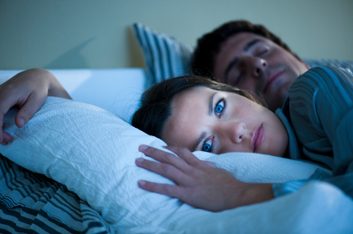
How dangerous is a lost hour of sleep?
Say goodbye to post-work commutes in the dark. On Sunday, March 10th, most Canadians will set their clocks forward for daylight savings time. This long-awaited extra hour of daylight brings with it one less hour of sleep during the overnight time change – an adjustment that has been blamed for bouts of depression, insomnia and heart attacks. But is daylight savings time really dangerous?

How your body deals with the time change
According to Colleen Carney, associate professor and director of the Sleep and Depression Laboratory at Toronto’s Ryerson University, your brain contains a central ‘clock’ called the suprachiasmatic nucleus, or SCN. This small region of the brain controls the circadian rhythm – the cycle that regulates your body temperature, digestive function, hormone release, and sleep/awake patterns. Unlike your watch or a clock on the wall, the circadian rhythm isn’t exactly 24 hours, so it relies on external cues such as daylight to set it. One of the main pathways for these cues is through the eye. “Cues can be simple things like the timing of light, when you get in and out of bed, the timing of meals – they’re important factors that actually set the clock and keep it running,” says Carney.
When daylight savings time occurs in the spring, and an hour of sleep is lost, the daily cues are altered, and your internal rhythm drifts. “[This change] affects your mood, hunger, sleep, fatigue levels and alertness,” explains Carney. For most people with regular sleep patterns, it takes about a day for the circadian rhythm to re-adjust to daylight savings time and the lost hour. You may feel sluggish, foggy brained and hungry, but these feelings will be short lived, and won’t cause permanent harm. For certain individuals, however, this time shift can prove extremely challenging, with the uncomfortable effects lingering for a while.

Who’s most at risk?
The people most susceptible to the daylight savings time switch typically have pre-existing conditions – sleep disorders characterized by sleep deprivation such as sleep apnea, periodic leg movement disorder, or other concerns such as depression. These pre-existing health problems become magnified due to daylight savings time’s interruption of the circadian rhythm. Insomniacs may also feel the effects. “Daylight savings time exacerbates insomnia because the idea of losing an hour’s sleep makes sufferers quite anxious, and sets them up for poor sleep,” says Carney. The time change may not cause the onset of insomnia, depression, or sleep disorders, but it can often aggravate them.

Research worldwide paints a frightening picture
An Australian study disclosed a link between daylight savings time and increased suicides. A 2008 Swedish research project found that the risk of heart attacks goes up in the days following the time change. But before you hide under your duvet, Carney warns that it’s important to note that these stories didn’t report a major player in an individual’s reaction to daylight savings time – your location on earth. “Latitude matters for mood and sleep,” explains Carney. “Different countries have different exposures to light, so it’s difficult for North Americans to make comparisons to Australia, or Scandinavian countries.”
Canadians shouldn’t be too concerned about these findings because our latitude is considerably different from the countries followed in those studies. There’s never been a real concrete discovery linking the increase in these health issues in Canada to the spring daylight savings time switch.

Beware drowsy drivers
While much of the research into daylight savings time is mixed and results depend on a host of specific variables, there is one health situation in North America that does increase when we spring forward – motor vehicle accidents. A 1998 Canadian study found that there’s a seven percent increase in traffic accidents on the Monday morning following the springtime move to daylight savings time. “Mental and cognitive changes from sleep deprivation, and the resulting difficulties in sustaining attention are probably the factors,” says Carney. So if you’re driving the morning after the change, don’t become a statistic-be extra diligent and careful.

How you can comfortably adapt
If you’re already sleep deprived, or have had a difficult time in the past adjusting to this hour loss of sleep, Carney recommends a simple trick: Four days ahead of the time change, start shifting your bedtime by going to sleep 15 minutes earlier each night and getting up in the morning 15 minutes earlier. “By the time the fourth day rolls around, your body is already matching the new clock,” she says. Experiencing the hour-long change in one go is more difficult and your body will feel it. By making this small 15-minute change each day, the effects will be barely noticeable. Instead of blaming the time swap for a lack of focus, or a drowsy workday, you’ll be tiptoeing through spring tulips, celebrating the joys of the extra hour of daylight.
Related:
• 15 ways to stop worrying and sleep better
• 6 easy ways to improve your sleep
• How sleep affects your health
